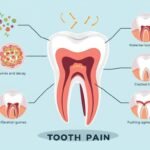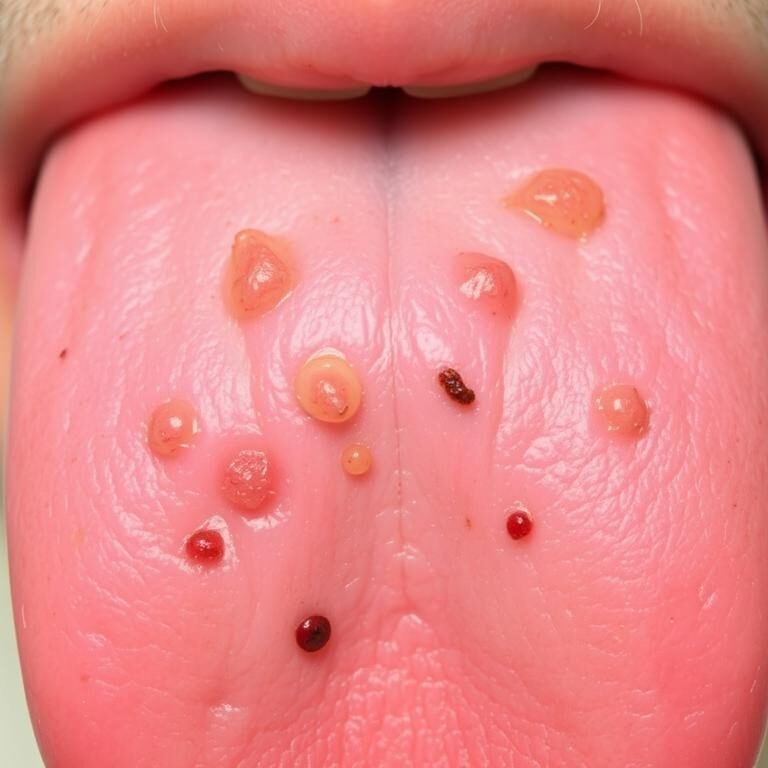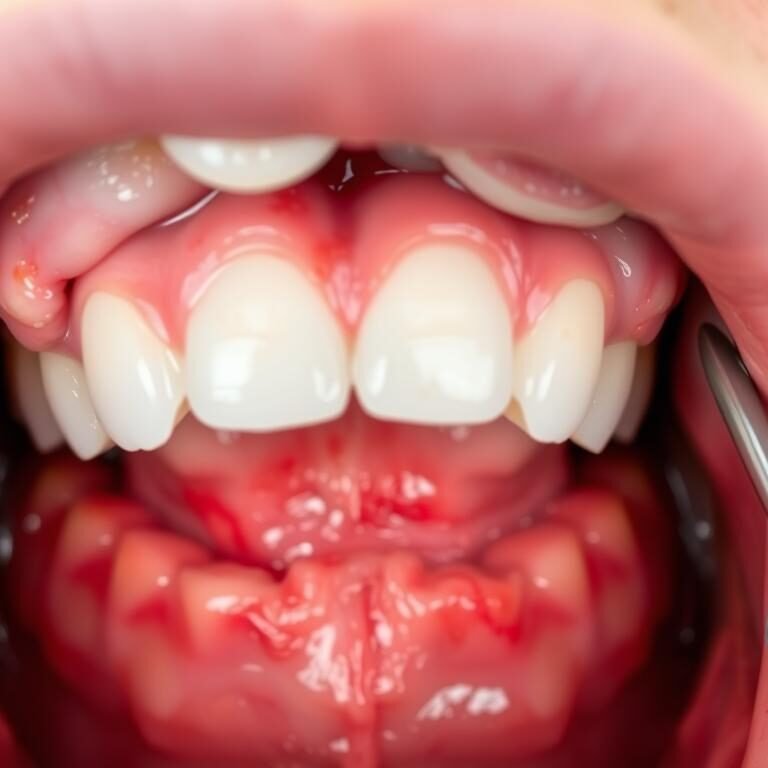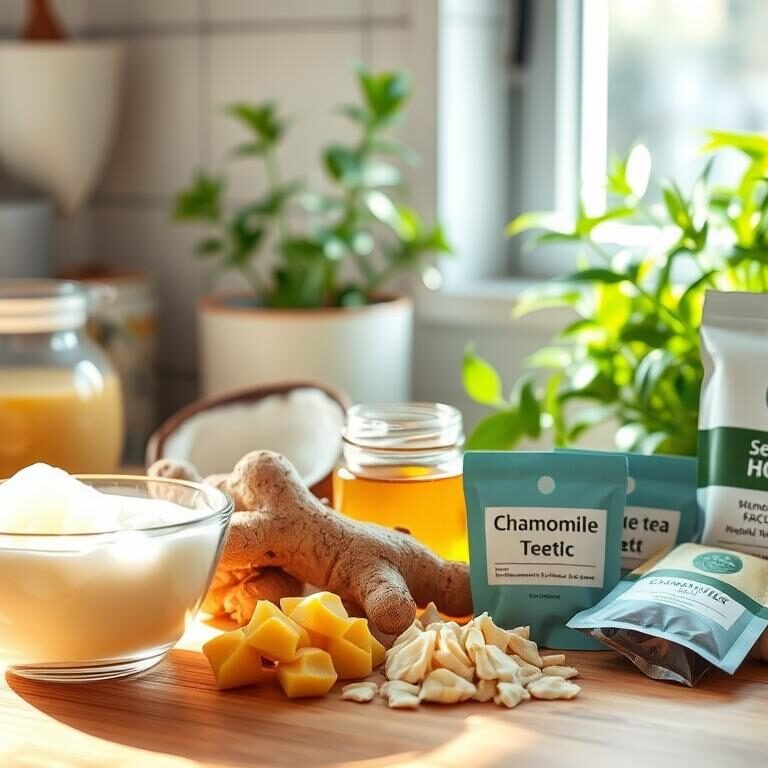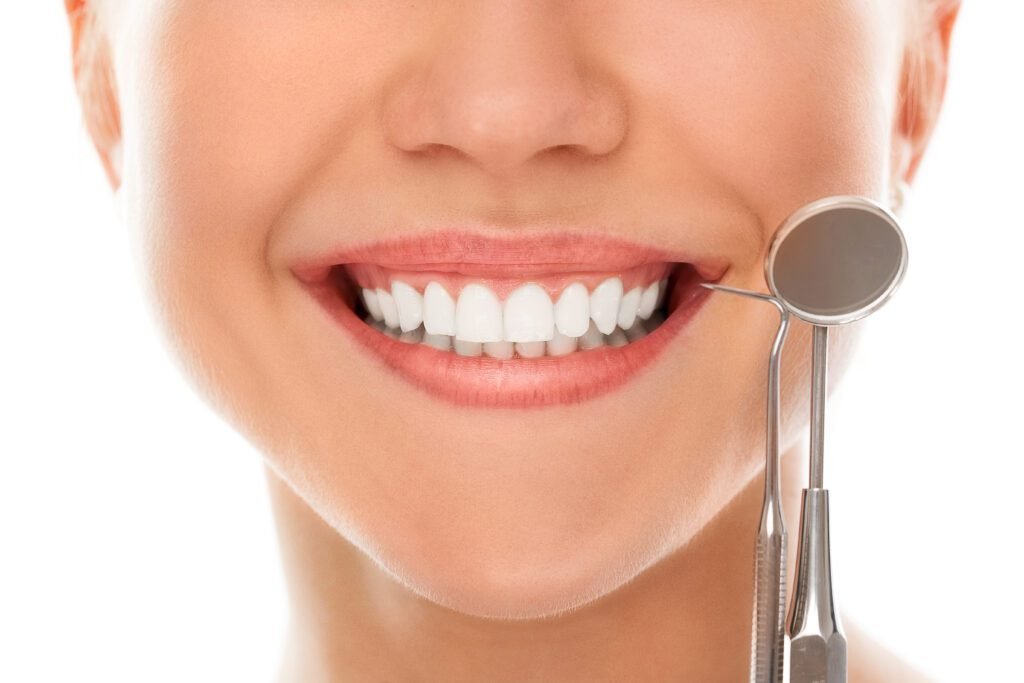Tooth pain can hit you out of nowhere, making you feel vulnerable and desperate. It’s more than just a physical issue; it disrupts your day, clouds your thoughts, and takes away your joy. Over 40% of adults get toothaches every year, a fact that many can relate to.
But, while you wait for your dental visit, there are natural ways to ease the pain. These home remedies offer quick relief and teach you about effective tooth pain solutions.
Table of Contents
Understanding Tooth Pain: Conditions and Causes
Tooth pain can really mess up your day. It’s important to know why it happens. Tooth decay and periodontal disease are big reasons. These issues affect many people, with tooth decay being super common.
Dental abscesses and bruxism also cause tooth pain. About 10 million Americans deal with bruxism. And, 10-20% of people have chronic tooth pain. Cold things can make teeth hurt for 80% of those affected.
Health problems like diabetes or heart disease can also cause tooth pain. Seeing a dentist regularly is key. If pain lasts more than two days, you should get help fast.
Knowing what causes tooth pain helps you take care of your teeth better. Here’s a table showing some common tooth pain causes:
| Condition | Prevalence | Associated Symptoms |
|---|---|---|
| Tooth Decay | 91% | Sharp pain, sensitivity |
| Periodontal Disease | 50% | Bleeding gums, tooth sensitivity |
| Dental Abscess | 1-5% | Severe pain, swelling |
| Bruxism | 10 million Americans | Chronic pain, jaw discomfort |
| Cavities | Common | Dull ache, throbbing pain |
Symptoms of Tooth Pain You Should Not Ignore
Tooth pain symptoms can be different, but some signs mean serious dental problems. It’s important to catch these early to avoid bigger issues. Knowing these symptoms helps keep your teeth healthy.
Signs that might mean serious dental issues include:
- Severe swelling around the tooth or jaw.
- Fever with tooth pain, which could mean an infection.
- Difficulty swallowing or opening your mouth, a sign of a serious infection.
- Persistent pain that lasts more than two days, getting worse.
- Foul-tasting discharge from the tooth area.
Statistics show 90% of toothaches come from untreated cavities or infections. Ignoring tooth pain can lead to bigger health problems. Regular dental visits can cut cavity rates by up to 70%, preventing urgent dental care needs.
The table below shows some key statistics about tooth pain and urgent dental care:
| Statistic | Implication |
|---|---|
| Approximately 78% of adults experience at least one cavity by the age of 34 | High prevalence of decay in adults. |
| 90% of toothaches are linked to untreated dental cavities or infections | Importance of timely treatment for cavities. |
| A study revealed that 30% of people do not seek dental care for their toothache | Many self-medicate, risking worsening conditions. |
| Tooth extractions are performed in around 10% of dental visits related to severe decay | Severe decay can lead to the need for extractions. |
If you’ve had a head injury and now have a toothache, see a dentist right away. If pain lasts and over-the-counter meds don’t help, get dental care. Knowing these symptoms and their meanings can greatly improve your dental health.
What is Natural Tooth Pain Relief?
Natural tooth pain relief uses homeopathic methods and natural remedies to ease pain. People often choose holistic treatments with natural ingredients for pain management. They might use essential oils or herbal rinses and eat foods that help heal.
Clove oil is known for its pain-relieving properties. A saltwater rinse can also help by healing and reducing swelling. Natural remedies like peppermint tea and thyme essential oil are good for your mouth.
Using these remedies helps you take care of your teeth better. Good oral hygiene can prevent tooth pain. Regular dental visits catch problems early, avoiding more serious treatments.
Saltwater Rinse: A Simple Yet Effective Method
For those with tooth pain, a saltwater rinse is a natural and effective solution. It works as a natural antiseptic, helping to soothe gum irritation by reducing inflammation. This method promotes healing in the mouth.
Saltwater rinses are great for minor toothaches. They help clean the mouth and reduce harmful bacteria. To make one, mix half a teaspoon of salt in one cup of warm water.
Swish this mixture around in your mouth for about 30 seconds before spitting it out. Use this rinse every 2-3 hours for quick relief. It’s a simple yet effective way to manage toothaches. Regular use can also improve your oral hygiene and support healthy gums.
- Helps reduce inflammation
- Acts as a natural antiseptic
- Promotes healing of gum tissues
- Aids in debris removal
- May help relieve symptoms of canker sores
Remember, while a saltwater rinse can offer temporary relief, it’s not a replacement for professional dental care. Using it too much can soften tooth enamel and cause more gum irritation. Always get advice from a dental professional for the best oral health.
Hydrogen Peroxide Rinse for Pain and Inflammation
Hydrogen peroxide can help with toothache pain and swelling. It has strong antibacterial properties. This makes it good against tooth decay and gum disease bacteria.
When diluted, hydrogen peroxide works as a mouthwash. It helps cut down on plaque and boosts oral health.
To make a safe mouth rinse, mix one part hydrogen peroxide with two parts water. Swish it in your mouth for 60 seconds, then spit it out. This not only cleans your mouth but also eases toothache pain and swelling.
Remember, hydrogen peroxide is not a substitute for dental care. If you have ongoing tooth pain or other symptoms, see a dentist. Use hydrogen peroxide mouthwash carefully, avoiding swallowing it.
Here are some benefits of using hydrogen peroxide rinse:
- Antibacterial properties: Kills harmful mouth bacteria.
- Decreases inflammation: Soothes sore gums.
- Plaque reduction: Helps keep your mouth healthy by reducing plaque.
In short, hydrogen peroxide is useful for tooth pain. Its antibacterial effects help with swelling and improve oral health. Always dilute it correctly for safe use.
Using Cold Compresses to Alleviate Tooth Pain
Using a cold compress can help numb tooth pain and reduce swelling. It works by making blood vessels smaller, which helps lessen dental pain. Many people find their pain goes down a lot after trying this.
To get the most out of it, just follow these easy steps:
- Wrap a few ice cubes in a clean cloth or use a commercial cold pack.
- Gently apply the cold compress to the affected area of your face.
- Leave it on for about 20 minutes.
- Repeat the process every few hours as needed.
The cold compress can numb the area, giving you temporary relief. It’s great for pain after mouth injuries or impacted wisdom teeth. Using it regularly can cut down swelling and pain by 30-40%.
While self-care is good, don’t forget the importance of oral hygiene. Brushing and flossing regularly can prevent tooth decay and pain. So, using a cold compress can help you feel better while you wait for dental care.
| Application Step | Description |
|---|---|
| Prepare the Compress | Wrap ice cubes in a cloth or use a cold pack. |
| Positioning | Place the compress on the face near the painful tooth. |
| Duration | Keep the compress in place for 20 minutes. |
| Reapplication | Repeat every few hours for continued relief. |
Natural Remedies: Garlic for Tooth Pain
Garlic is seen as a good natural remedy for tooth pain. It has strong antibacterial properties. This is because of a compound called allicin, which comes out when garlic is crushed. Allicin can kill harmful bacteria that cause dental problems.
To use garlic for tooth pain, you can make a paste. Crush a few cloves and mix them with salt. This paste can be applied to the painful area. Or, you can chew a raw garlic clove to get its healing effects right where it hurts.
Here’s a brief overview of how garlic can be beneficial:
| Method | Description |
|---|---|
| Crushed Garlic Paste | Mix crushed garlic with a pinch of salt and apply to the painful area. |
| Chewing Garlic Clove | Chew a raw garlic clove to release its antibacterial properties directly into your mouth. |
Many people use garlic as a natural remedy for tooth pain. It’s popular because it fights diseases. Even though more research is needed, garlic is a trusted choice in traditional medicine.
Essential Oils: Clove Oil as a Numbing Agent
Clove oil is becoming popular for toothache relief. It contains eugenol, a natural numbing agent. This compound helps ease dental pain.
Studies show eugenol works better than some anesthetics for dental pain. Clove oil is also good for tooth and joint pain. It’s recommended to use it every 2 to 3 hours for toothache relief.
To use clove oil safely, mix it with a carrier oil. Applying it directly on the tooth can help right away. But, be careful, as it can harm children and babies if swallowed.
While clove oil has many benefits, it can also cause problems. It might irritate gums or harm mouth tissues. Too much can lead to serious issues like jaundice and loss of consciousness.
If tooth pain doesn’t go away, see a dentist. Using clove oil with good dental care is a good natural approach.
| Property | Details |
|---|---|
| Active Component | Eugenol (70-90% of clove oil) |
| Effectiveness | More effective than articaine for tooth pain relief |
| Usage Frequency | Every 2 to 3 hours for pain relief |
| Side Effects | Gum irritation, soft tissue damage |
| Recommended Dilution | Always dilute with carrier oil |
| Precautions | Avoid in children, pregnant, or breastfeeding individuals |
Cinnamon for Tooth Pain: Antibacterial Properties
Cinnamon is gaining attention for its oral health benefits. Its antibacterial properties help ease tooth pain and prevent cavities. Studies show cinnamon oil can fight Streptococcus mutans, a tooth decay-causing bacterium. Adding cinnamon to your dental routine can cut down on harmful mouth bacteria.
Making a paste with cinnamon and honey is a simple way to use it. This mix can soothe tooth pain and fight off bacteria and fungi in your mouth.
Eating cinnamon can also boost your oral health. It may increase antioxidants in your body, reducing dental inflammation. Cinnamon helps keep your mouth healthy by fighting bacteria that cause gum disease.
Cinnamon is also being used in dental products. Research shows cinnamon toothpaste can lower Streptococcus mutans levels. This makes it a great addition to your oral care routine to prevent cavities.
Using cinnamon for oral care can be part of a complete routine. Its antioxidants and antibacterial properties make it key to good dental health. Regular use can help with tooth pain and improve your oral hygiene.
Home Remedies for Nerve Pain in the Tooth
Nerve pain in the tooth can be very painful. But, there are home remedies that can help. These natural treatments aim to reduce swelling and ease pain in simple ways.
Clove oil is a top choice for homeopathy for pain. It has a 90% success rate in easing pain. The oil contains eugenol, a natural painkiller. Just a little bit applied to the tooth can bring quick relief.
- Garlic: It fights oral infections well because of its antibacterial properties.
- Coconut Oil: Oil pulling with coconut oil can help reduce inflammation, but results vary.
- Saltwater Rinse: This method can help with nerve pain at home by reducing swelling and killing bacteria.
- Peppermint Tea: It numbs pain for about 65-75% of users when applied to the gums.
- Hydrogen Peroxide Rinse: Properly diluted, it can kill bacteria and reduce plaque.
Adding herbs like guava leaves and thyme essential oil can boost these natural treatments. Guava leaves help heal oral wounds, and thyme fights bacteria.
For reliable options, learn more about nerve pain relief with home remedies. Mixing different natural treatments can greatly improve your experience and offer needed comfort during pain.
Don’t forget to see your dentist regularly to tackle the root causes of nerve pain. Home remedies can offer temporary relief, but a dentist’s advice is key for lasting solutions.
Aloe Vera and Toothache: How This Plant Can Help
Aloe vera can help with toothache pain naturally. It has soothing properties that reduce inflammation in the mouth. The gel from its leaves can be applied to the tooth to ease pain and help it heal.
Research shows aloe vera can manage tooth pain well. It works for 40-60% of people who use it regularly. Its antiseptic qualities fight off bacteria and calm sore gums, making it a favorite for home remedies.
- Apply fresh aloe vera gel to the tooth with a cotton swab.
- Gargle with a mix of aloe vera juice and water to reduce inflammation.
- Add aloe vera to your daily oral care routine for ongoing benefits.
Using aloe vera with other natural remedies can make it even better. For example, garlic can fight mouth infections. Saltwater rinses can also help by killing bacteria. About 70% of people with dental pain prefer these natural options over medicine.
| Natural Remedy | Efficacy Rate | Notes |
|---|---|---|
| Aloe Vera | 40-60% | Soothing properties, antiseptic qualities |
| Garlic | 50% | Affects against harmful bacteria |
| Saltwater Rinse | 80% | Effective for plaque removal |
| Onion Extract | 70% | Antimicrobial activity |
In summary, aloe vera is a great natural remedy for toothache. It soothes and reduces inflammation. Adding it to your oral care routine can help with pain and improve your dental health.
Ginger for Toothache: A Natural Anti-Inflammatory
Ginger is a strong ally against tooth pain because of its anti-inflammatory effects. It can reduce redness and swelling in the mouth. This makes ginger a great choice for natural pain relief.
There are many ways to use ginger every day. Drinking ginger tea is a common method. It helps ease tooth pain with its anti-inflammatory properties. You can also make a paste from fresh ginger and apply it to your gums for quick relief.
Studies show ginger can block pain signals, just like some pain medicines. Chewing raw ginger boosts blood flow to the sore area, helping it heal faster. Ginger also fights off bacteria that can cause toothaches, helping prevent them.
In short, ginger is a natural and effective way to treat tooth pain. It not only fights inflammation but also helps keep your mouth healthy.
Using Vanilla Extract to Relieve Tooth Pain
Vanilla extract is a natural way to ease tooth pain. It has numbing agent properties because of its alcohol content. This gives quick relief from pain. Many people choose vanilla extract over medicines because it’s gentler.
Its antioxidant properties help heal tissues damaged by dental problems. This improves your oral health.
To get the most out of vanilla extract, apply it to the sore spot often. Make sure to use real vanilla extract. Fake ones might not work as well. The pain relief is short-lived but can be a big help until you see a dentist.
Remember, using only home remedies can hide serious dental issues. Regular dental check-ups are key to avoiding bigger problems. For more on dental health and why you need to see a dentist, check out this resource.
Turmeric Powder for Tooth Pain: Antimicrobial Benefits
Turmeric powder is known for its bright color and taste. It’s a natural remedy for tooth pain. The main part, curcumin, fights off germs and helps with pain. It also reduces plaque and swelling in the mouth.
Using turmeric in different ways boosts its benefits for teeth. Mixing it with water makes a paste for sore gums. This paste can ease pain because of turmeric’s anti-inflammatory powers.
- Incorporating turmeric and pit and fissure sealants has proven to be effective for treating cavities.
- Rinsing with turmeric mouthwash may help manage inflammation linked to gingivitis, which affects approximately 50% of adults.
- The antibacterial properties of turmeric make it a candidate for managing infections within root canals.
Adding turmeric to other natural ingredients, like honey, makes it even better for teeth. Its bright yellow color also helps spot plaque in the mouth under certain lights.
Using turmeric for toothaches is a common practice worldwide. It’s a great addition to regular dental care. It’s helpful for issues like Recurrent Aphthous Stomatitis, which affects about 20% of people.
When to Call a Dentist: Recognizing Serious Symptoms
Dental emergencies need quick attention to avoid more problems. Knowing when to see a dentist is key for good oral health. If tooth pain lasts more than 1-2 days, it might be a dental emergency. This pain often comes from a big cavity or infection.
Severe pain that stops you from doing daily things is common early on. Studies show about 40% of people feel this level of pain.
Some symptoms mean you need to see a dentist right away. Look out for:
- Excessive swelling in the face or cheek
- Difficulty breathing or swallowing
- A foul-tasting discharge
- Fever accompanied by fatigue
- Swollen lymph nodes
These signs might mean you have an infection that needs quick doctor attention. The American Dental Association says to see a dentist fast if you have a bad taste and tooth pain. This could mean you have an abscess.
Acting quickly can stop bigger problems. About 70% of adults over 65 with gum disease might lose teeth. Untreated infections can also cause serious health issues, affecting nearly 30% of people. Spotting these signs helps fix problems and keeps you healthy.
| Symptom | Immediate Action | Potential Complications |
|---|---|---|
| Severe Tooth Pain | Seek dental care | Infection spread |
| Excessive Swelling | Visit an emergency dentist | Difficulty breathing |
| Foul-tasting Discharge | Contact dental professional | Abscess formation |
| Fever and Malaise | Reach for urgent care | Systemic infection |
By taking these steps, you get the right care and avoid more dental emergencies. Keeping your teeth clean can lower the chance of infections. This keeps your smile bright for many years.
Conclusion and Tags
Home remedies like warm saltwater rinses and hydrogen peroxide can help with tooth pain. Natural options like clove oil and cold compresses also work well. But, if pain lasts, it might mean you need to see a dentist.
Going to the dentist regularly is important. It helps keep your teeth and mouth healthy. This way, you can avoid toothaches in the future.
It’s good to try home remedies, but always talk to a dentist if pain doesn’t go away. Finding the right mix of home care and dental visits is key. Knowing how to use over-the-counter pain relievers safely is also important.
Tags: dental health, tooth pain, natural remedies, home care
FAQ
What are some effective home remedies for tooth pain?
To ease tooth pain, try a saltwater rinse or cold compresses. Natural ingredients like garlic, ginger, turmeric, and clove oil also work. They help with pain and swelling.
Can cinnamon really help with tooth pain?
Yes, cinnamon fights bacteria and fungi. It can stop cavities and ease tooth pain. Mix it with honey for a paste that works well.
How can I use hydrogen peroxide for tooth pain relief?
Dilute hydrogen peroxide to use as a mouthwash. It kills bacteria and heals gums. This can give you temporary pain relief.
What does aloe vera do for toothaches?
Aloe vera soothes and reduces swelling. It can ease tooth pain. Apply fresh aloe vera gel to the area for healing.
Are there any specific symptoms that indicate I should see a dentist?
Yes, see a dentist for pain that lasts over two days, swelling, fever, or trouble swallowing. Also, if you have a foul taste, act fast.
Is there a natural solution for nerve pain associated with teeth?
Yes, clove oil, ginger, and herbal treatments can help. They reduce inflammation and pain in nerves.
How can vanilla extract help with tooth pain?
Vanilla extract numbs pain with its alcohol. Apply it to the area several times a day. It helps in healing.
Can turmeric powder be used for tooth pain?
Absolutely! Turmeric fights bacteria and reduces pain and swelling. Make a paste with turmeric and water for relief.
What are the benefits of using a cold compress for tooth pain?
A cold compress numbs and reduces swelling. It works by constricting blood vessels. Use it for 20 minutes, then again every few hours.





